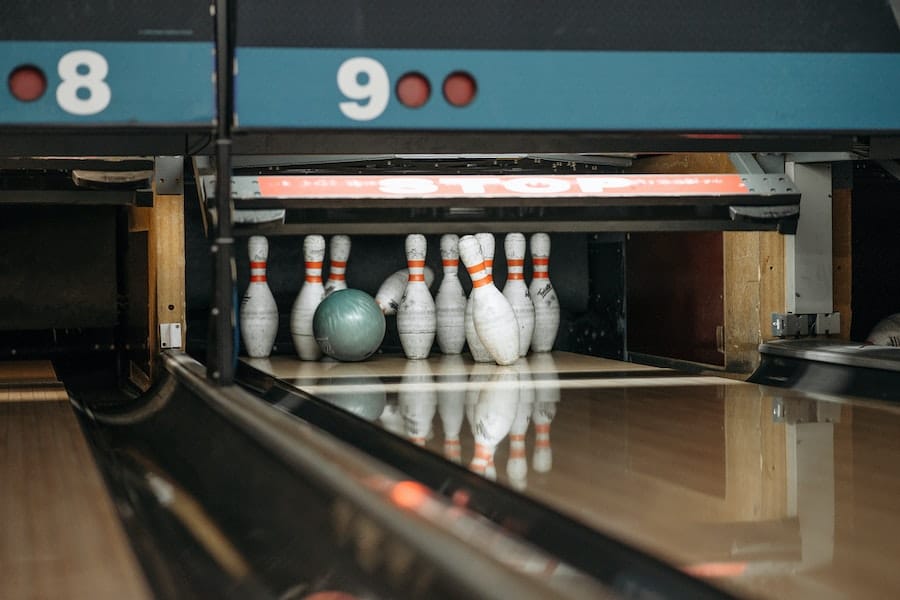
Bowling is a beloved pastime that combines skill, strategy, and camaraderie. For enthusiasts and casual bowlers alike, achieving a perfect score in bowling is the ultimate accomplishment. In this article, we delve into the intricacies of this elusive achievement. From understanding the basics of the game and its scoring system to exploring the history of perfect scores and hearing firsthand accounts from bowlers who’ve reached this pinnacle, we aim to unravel the mystique surrounding what it truly means to achieve a perfect score in bowling. Join us on this enlightening journey down the alley.
What Is A Perfect Score In Bowling?
A perfect score in bowling is 300 points, which is the highest achievable score in a single game. To attain this perfect score, a bowler must consistently knock down all ten pins with strikes in all ten frames. It is a rare and prestigious accomplishment in the world of bowling, requiring precision, consistency, and a bit of luck.
How To Achieving A Perfect Score?
Achieving a perfect score of 300 in bowling requires a combination of skill, strategy, and focus. Here are some key steps to increase your chances:
- Consistency: Practice regularly to develop a consistent approach and delivery. Work on your timing, footwork, and release to minimize variations.
- Spare Shooting: Ensure you convert spares consistently. A single missed spare can ruin a perfect game.
- Strike Ball: Find a strike ball that suits your style and lane conditions. Consult with a pro shop for recommendations.
- Lane Reading: Learn to read the lane conditions and adjust your target and speed accordingly.
- Mental Game: Stay focused, maintain a positive mindset, and manage pressure. Visualization and breathing techniques can help.
- Practice Strikes: Strive for consecutive strikes during practice to build confidence and consistency.
- Maintain Equipment: Keep your bowling balls and shoes in good condition. Clean and maintain them regularly.
- Learn from Experts: Study professional bowlers and their techniques. Online tutorials and coaching can be beneficial.
- Stay Fit: Physical fitness can improve your endurance and coordination, which are essential in bowling.
- Patience: Be patient and persistent. Achieving a perfect score may take time, and setbacks are part of the journey.
The History Of Perfect Scores In Bowling
The history of perfect scores in bowling is a story of skill, determination, and the evolution of the sport. The concept of a perfect game, where a bowler achieves a score of 300 by striking down all ten pins in all ten frames, dates back to the early days of bowling. While bowling itself has ancient origins, the modern scoring system, which includes the concept of a perfect score, was standardized in the late 19th century.
The first recognized perfect game in bowling was achieved by Herman Branham in 1902, marking a historic moment in the sport. Over the years, the pursuit of perfection has captured the imaginations of bowlers worldwide. The growth of professional bowling leagues and tournaments in the mid-20th century heightened the quest for perfect scores, with legendary bowlers like Don Carter, Dick Weber, and Earl Anthony making their mark with memorable 300 games.
The advent of televised bowling in the 1950s and 1960s brought the thrill of perfect games into living rooms across the nation, solidifying the concept of a 300 as the pinnacle of bowling excellence. As technology advanced, lane conditions and equipment evolved, presenting new challenges and opportunities for achieving perfect scores. In recent decades, professional bowlers like Walter Ray Williams Jr. and Pete Weber have continued to raise the bar, showcasing the enduring pursuit of perfection in this beloved sport.
In conclusion, the history of perfect scores in bowling reflects the dedication and passion of bowlers throughout the ages. From the early days of bowling to the modern era of professional competition, the perfect game has remained a symbol of excellence and a testament to the timeless appeal of this recreational activity.
Common Challenges And Obstacles That Bowlers Face In Their Pursuit
Bowlers pursuing a perfect score of 300 face several common challenges and obstacles along the way:
- Lane Conditions: The oil patterns on bowling lanes can vary greatly, affecting ball motion. Bowlers must adapt their strategies to suit the specific conditions, which can change from game to game.
- Pressure and Nerves: As a bowler approaches a potential perfect game, the pressure can mount, leading to nervousness and anxiety. Maintaining focus and composure becomes increasingly challenging.
- Consistency: Achieving a perfect score requires consistent shot-making throughout the entire game. Even a single errant shot can break the streak of strikes.
- Spare Conversion: While strikes are essential for a perfect score, spare conversion is equally crucial. Missing spares can drastically reduce a bowler’s score.
- Physical Stamina: Bowling can be physically demanding, especially during long tournaments or practice sessions. Fatigue can affect a bowler’s accuracy and timing.
- Mental Fatigue: The mental aspect of bowling is often underestimated. Sustaining concentration over several frames, especially in high-pressure situations, can be mentally exhausting.
- Equipment Issues: Bowling balls wear down over time, and choosing the right ball for specific lane conditions is critical. Maintaining equipment in optimal condition is essential for success.
- Scoring Errors: Human error or mechanical failures in scoring can lead to incorrect calculations. Bowlers must vigilantly monitor their scores to ensure accuracy.
- Timing and Rhythm: Achieving a perfect score demands impeccable timing and rhythm. Any disruptions or distractions can throw off a bowler’s game.
- Bad Breaks: Occasionally, a bowler can make a perfect shot only to leave a pin standing due to a fortunate pin action or a solid pocket hit that doesn’t carry.
The Perfect Game Experience
The experience of achieving a perfect game in bowling is a moment of triumph and elation that leaves a lasting impression on both casual and professional bowlers. Here’s a glimpse into the perfect game experience:
- The Early Frames: A perfect game typically starts modestly, with the first few strikes feeling like any other good game. Bowlers focus on their technique and line up their shots.
- Building Momentum: As the frames progress, the excitement begins to build. Each successive strike adds to the sense of anticipation, and bowlers become acutely aware that something special might be in the making.
- Navigating the Middle Frames: By the middle of the game, the pressure can intensify. Bowlers start to feel a mix of nervousness and determination as they approach the latter frames with a flawless record.
- The 10th Frame: The 10th frame is the climax of the game. Bowlers are just two strikes away from perfection. The atmosphere in the bowling alley becomes charged with excitement and tension.
- The First Ball in the 10th: The moment of truth arrives as the bowler releases the ball for the first shot in the 10th frame. A strike here means they are just one shot away from a perfect game.
- The Final Shot: The final shot of the game carries immense weight. All eyes are on the bowler as they aim for that last strike. When the pins crash down for the 12th consecutive time, there’s an explosion of joy and relief.
- The Reaction: The bowler’s reaction to achieving a perfect score can vary widely. Some bowlers erupt with shouts and high-fives, while others maintain a calm exterior, masking the exhilaration inside.
Conclusion
In conclusion, achieving a perfect score in bowling is the culmination of skill, dedication, and unwavering focus. The pursuit of this elusive goal has captivated bowlers for generations, driving them to push the boundaries of their abilities. While a perfect game is rare, the experience of attaining it is marked by a rollercoaster of emotions and an enduring sense of achievement. It serves as a testament to the timeless appeal of bowling, where the pursuit of excellence continues to unite and inspire bowlers, both seasoned and novice, on lanes around the world.
FAQ’s
What Is A Perfect Score In Bowling?
A perfect score in bowling is 300 points, achieved by knocking down all ten pins with strikes in all ten frames of a game.
How Common Are Perfect Scores In Bowling?
Perfect scores are relatively rare, with only a small percentage of bowlers achieving them due to the high level of skill required.
What’s The Difference Between A Strike And A Spare In Bowling?
A strike is when all ten pins are knocked down with the first ball in a frame, while a spare is when all ten pins are knocked down with two balls in a frame.
Is There A Perfect Score In Mini Bowling Or Candlepin Bowling?
Mini bowling and candlepin bowling have their own scoring systems, and a perfect score in these variants is different from the traditional 300-point perfect game in ten-pin bowling.
What’s The Highest Possible Score In Bowling?
In traditional ten-pin bowling, the highest possible score is 300, but in other variants like candlepin or duckpin bowling, the maximum score can vary.








